Goodbye masks, hello full bars: California lifts Covid rules in ‘grand reopening’
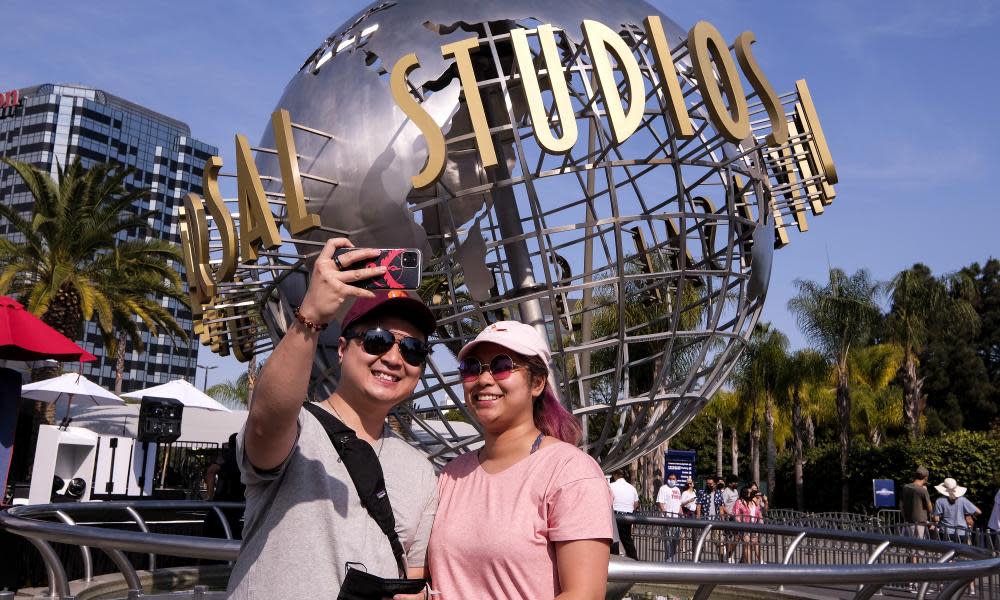
- Oops!Something went wrong.Please try again later.
Bars at full capacity. No masks for vaccinated Disneyland goers. Fans sitting side-by-side at Giants and Dodgers games.
California rolled back its major public health restrictions on Tuesday, 15 months after it became the first state in the US to shut down to prevent the spread of Covid-19.
Related: San Francisco may be first major US city to hit herd immunity, experts say
At the stroke of midnight, the state lifted most of its restrictions on social distancing and capacity limits. Vaccinated residents can now go without masks in most settings, with some exceptions – including on public transit, in healthcare facilities, homeless shelters and prisons, and indoors in K-12 schools and childcare facilities, since young children still have not been vaccinated.
The move has been billed as a “grand reopening”, and comes at a moment of optimism for a state that was once squarely in the pandemic’s destructive path.
“This is the lifeline. This is what we’ve been waiting for,” said Brett Winfield, the operations director for Pouring with Heart, a company that runs nearly 20 bars in Los Angeles.
The relaxing of public health rules about social distancing, patron numbers and mask wearing are “incredibly significant”, Winfield said. “It’s almost impossible to make enough money to run an effective and profitable business at 50% capacity for restaurants, and up to 25% capacity for bars.”
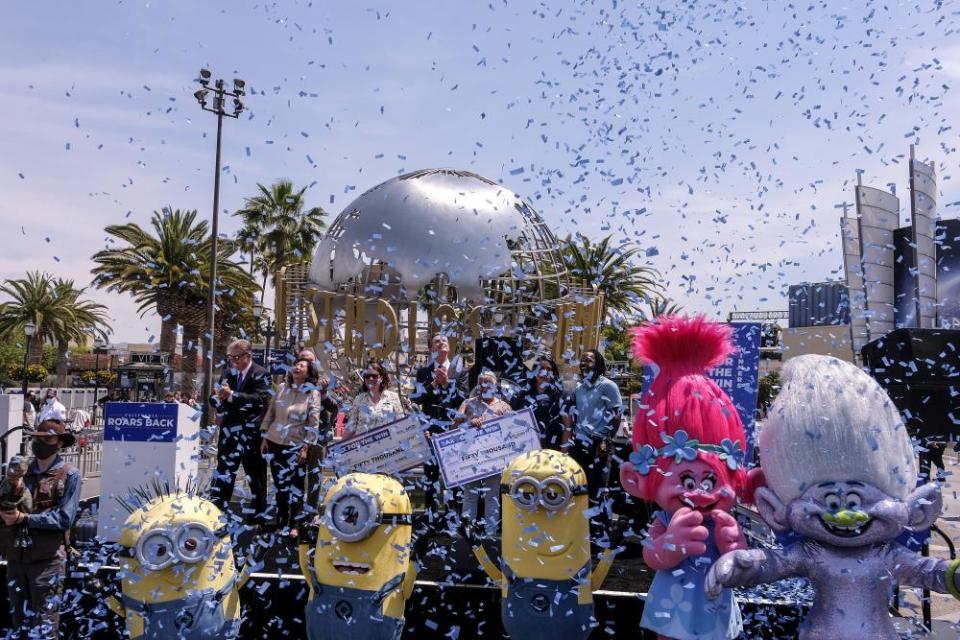
Venues were expecting a big increase in patrons starting Tuesday night, he said. “I think a lot of people were just literally waiting for the government to say, ‘It’s OK.’”
Speaking on the eve of the reopening, California’s governor painted a bright picture of the summer ahead. “With all due respect, eat your heart out, the rest of the United States,” said Gavin Newsom. “The state is not just poised to recover, it’s poised to come roaring back.”
In San Francisco’s Mission district, one of the city’s hardest-hit neighbourhoods, bar owner Gillian Fitzgerald said she was expecting a serious crowd this evening.
“I just know that a normal person that would never go out on a Tuesday will be going out on Tuesdays and Wednesdays for a few weeks,” said Fitzgerald, who runs Casements, a popular bar that opened only a few months before Covid struck.
The changes are being welcomed by many business owners who have struggled to keep themselves afloat. At a virtual town hall on 10 June explaining the reopening rules, Los Angeles public health officials were encouraging: yes, you can reopen your nightclub. Yes, customers can serve themselves from buffets again. While unvaccinated people are still required to wear masks indoors, officials explained, businesses are allowed to implement an honor system, letting customers self-attest to being vaccinated. Those that prefer to continue requiring masks, or to create a system to check vaccination status, can also do so.
From success story to hotspot and back again
Pandemic highs and lows saw California go from an early success story to the US center of the virus. As the first in the country to impose a statewide shutdown in March 2020, California’s businesses were just starting to reopen last June when cases started rising and restrictions were imposed again.
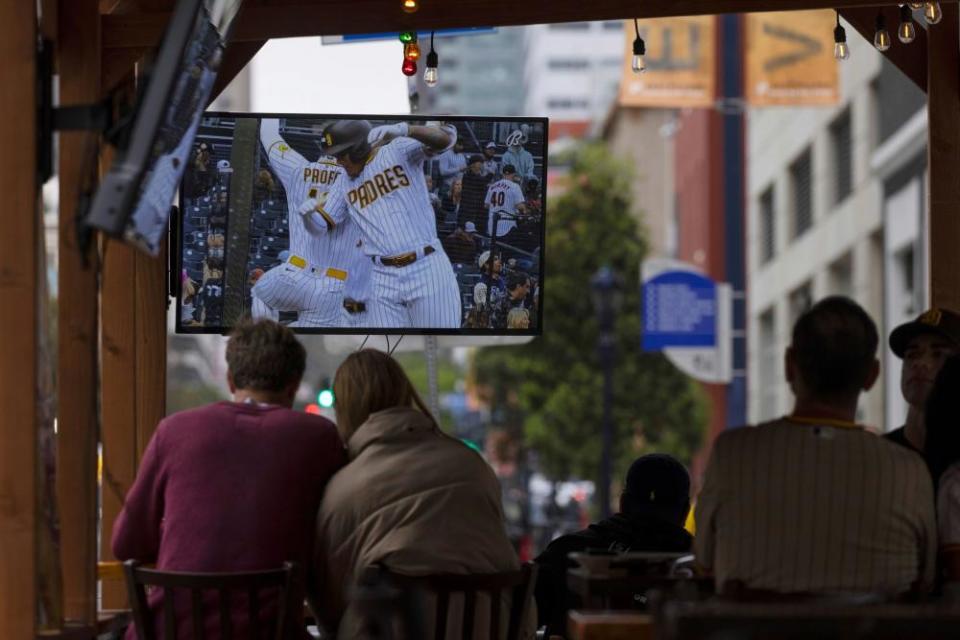
A darker reality soon set in as California hurtled toward a deadly winter. At the height of its surge, Los Angeles faced overflowing ICUs and two Covid deaths every hour. More people have tested positive for the virus in California (3.8 million and counting) and more people have died (63,000 plus) than anywhere else in the country, although the nation’s most populous state had a lower per-capita death rate than most others.
Now, thanks in part to an effective vaccine rollout and high rates of adoption, California has achieved one of the lowest Covid rates in the country. At least 70% of adults have now had at least one dose of the vaccine, and officials have been slowly easing restrictions since the spring.
Recent months have seen more diners and shoppers venturing out, schools and offices reopening, and many hoping that life in the Golden State is getting closer to some kind of normal.
People are free to order at the bar, free to dance, free to mingle, and that makes our lives easier
Gillian Fitzgerald, bar owner
In the Mission, Casements seized the opportunity to expand outdoors in both directions, adding sidewalk tables out front and building out a charming patio in back. What was once an uninviting parking structure now feels like a backstage area at a music festival. Still, Fitzgerald and her staff are most excited not to have to police patrons to stay in line with public-health guidelines.
“Now people are free to order at the bar, free to dance, free to mingle, and that makes our lives easier,” she said. “A big part of my relief is that I don’t have to be the bad guy any more.”
In the nearby Castro district, the venerable diner Orphan Andy’s has served a largely LGBTQ+ clientele for decades, with one terminus of San Francisco’s famed F-Market streetcar just outside. That line’s fleet of heritage rolling stock only returned in mid-May after a 14-month absence, and Michael England – who has worked at Orphan Andy’s since it opened more than 40 years ago – has noticed a difference.
“Business has been on the upswing,” he said. “It started out pretty slow, and it’s increasing every week. We actually are expecting a boom for Pride Week. I’m finding that there are a lot of tourists in town.”
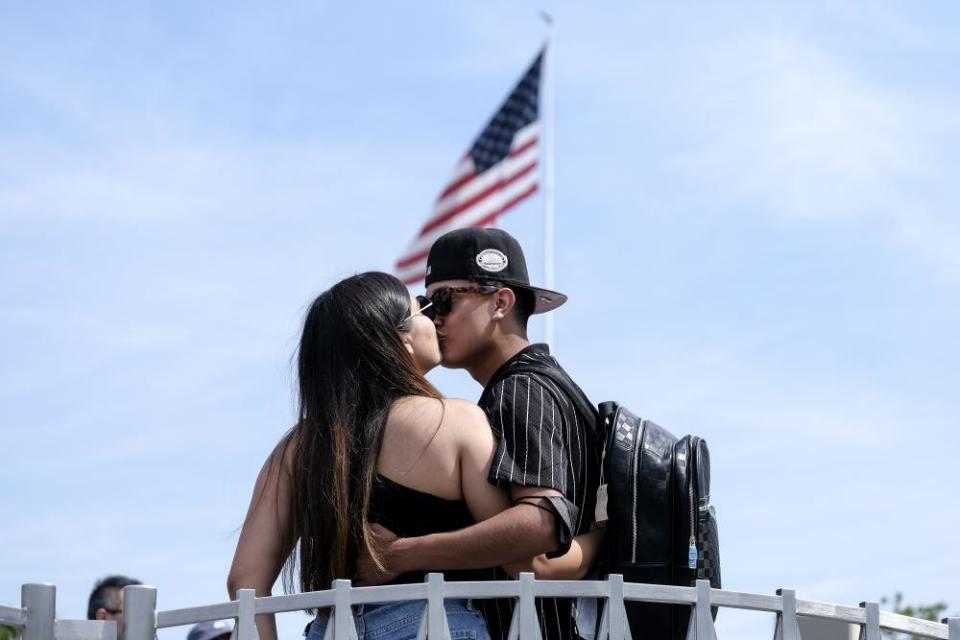
Months earlier, Orphan Andy’s won praise for an inventive approach to keeping its patrons safe: installing elaborate Lucite partitions to keep close-set vintage tables isolated. They’re gone now.
“The mandate is not there any more,” England said.
While San Francisco has registered fewer than 40,000 cases and a comparatively low 550 deaths, the Latino community in the Mission suffered disproportionately. Still, signs of cautious optimism were abundant in a neighborhood filled with essential workers. At La Victoria, a bakery that has served pan dulce and other Mexican treats for more than 70 years, Jacqueline Hernandez remained masked as she worked behind the counter. Her panadería has been open the entire time, she noted, and only now benefiting from gradually increased ridership through the Bart station one block away.
Business was “pretty good, actually”, Hernandez said, adding that she expected it to improve further as the city reopened in earnest today. “That’s what we’re hoping.”
San Francisco has immunized more than 70% of its eligible population, and even sites in pandemic-ravaged zip codes are seeing fewer people in need. Across the street from La Victoria bakery is a vaccine clinic that largely serves people of color in and around the Mission.
“When we opened up, we were doing 500 vaccinations a day,” said Diane Jones, a nurse and community ambassador who credits the city’s relative success with Covid to its experience serving marginalized communities during the HIV/Aids pandemic. “That was all first doses. I’m looking at yesterday and we vaccinated 144. Of those, 41 were same-day appointments, so people just dropped in. That tells you the capacity we have.”
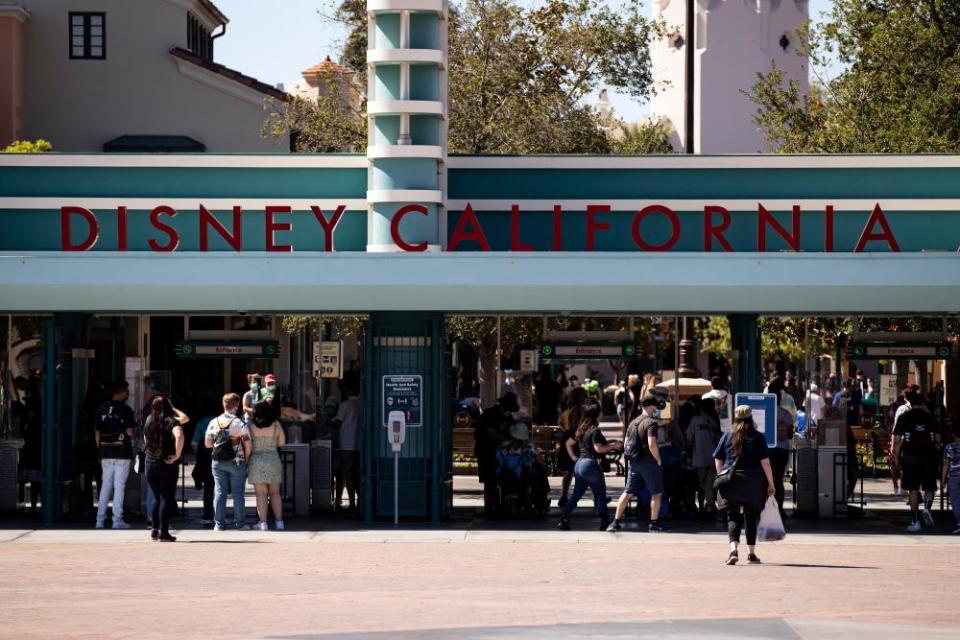
‘Excited to be back’
Public health officials and state leaders have continued to stress that the reopening doesn’t mean the pandemic is over. The state’s rollback comes as the US marked 600,000 deaths from Covid-19 and as vaccination rates nationwide have slowed, raising fears the country will struggle to reach widespread immunity.
Newsom has rolled out a series of lotteries for vaccinated residents in the hopes of encouraging more people to get their shots.
And not all areas of the state are trending in a positive direction. Northern California, a region that has forcefully pushed back against mask mandates and other restrictions, has recently experienced a troubling rise in cases and hospitalization.
Many question if the honor system for mask wearing will work, including the California Nurses Association, which said the new rules essentially call on businesses and essential workers to be the vaccination police.
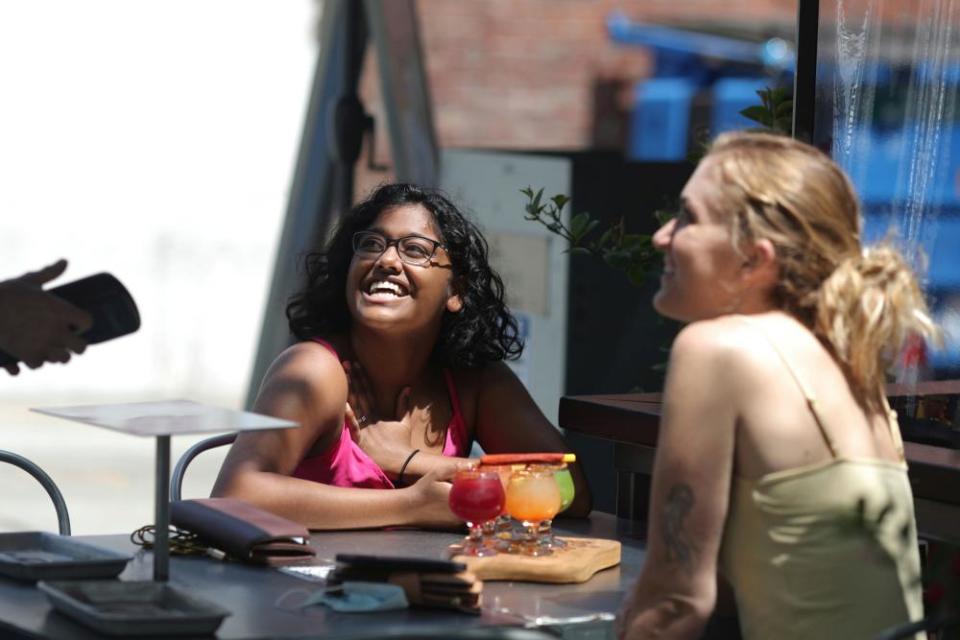
“This is not a sound public health strategy,” said Sandy Rending, a president of the association, which is calling on residents to keep masking up indoors and in crowds.
Still, a sense of cautious enthusiasm for the future was palpable on Tuesday.
Just before noon, La Cita bar, a downtown institution in Los Angeles, quietly opened its doors for the first time since 15 March 2020. Owner Carl Lofgren said he felt “a combination of excitement and panic”.
Within minutes, a line had formed. At the very front of the line was Brian, 58, who said he was ducking into the bar while on lunch break from working downtown, and declined to give his last name.
Just before noon, 12 hours after the state lifted capacity restrictions, @lacitabar opened its doors for the first time since March 15, 2020. Owner Carl Lofgren said he was feeling “a combination of excitement and panic” but that customers have been telling them “open already.” pic.twitter.com/AwNRIVy0Aj
— Lois Beckett (@loisbeckett) June 15, 2021
He had missed the people at La Cita, and said he was eager to hear updates on their lives. One of the bartenders had just gotten married before the pandemic closed the bar. Another had been planning to buy a house. What was happening now?
Further down, Heather Flores, 31, waited with five longtime friends. Her group had used to meet up at least once a month to celebrate birthdays and good news, but this was the first bar meetup they had had in more than a year. “I’m just excited to be back,” she said.
Around 12.30, more than a dozen people filed into the bar at last. “Woohoo!” one cheered.
About 10 minutes later, Brian walked out again. He had had one beer, he said, and now had to go back to his desk.
“Damn, it looks good in there,” he said.
The Associated Press contributed reporting

